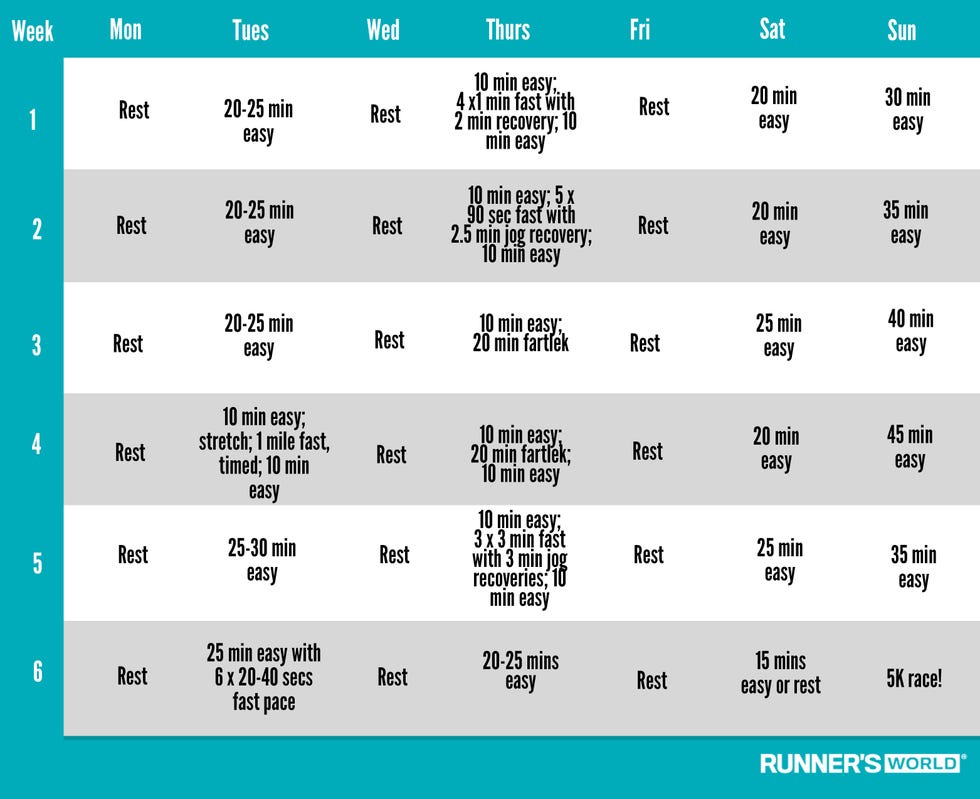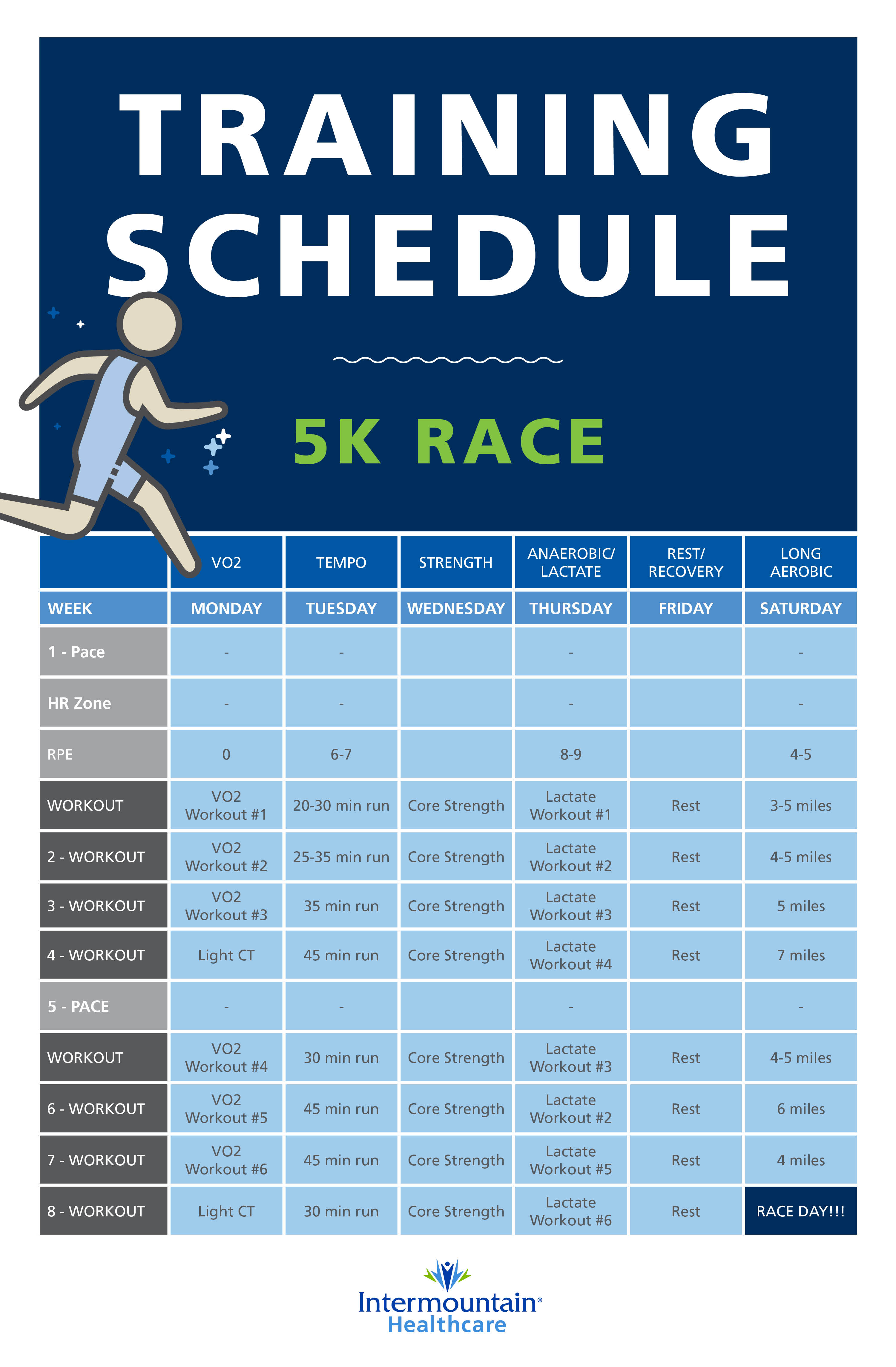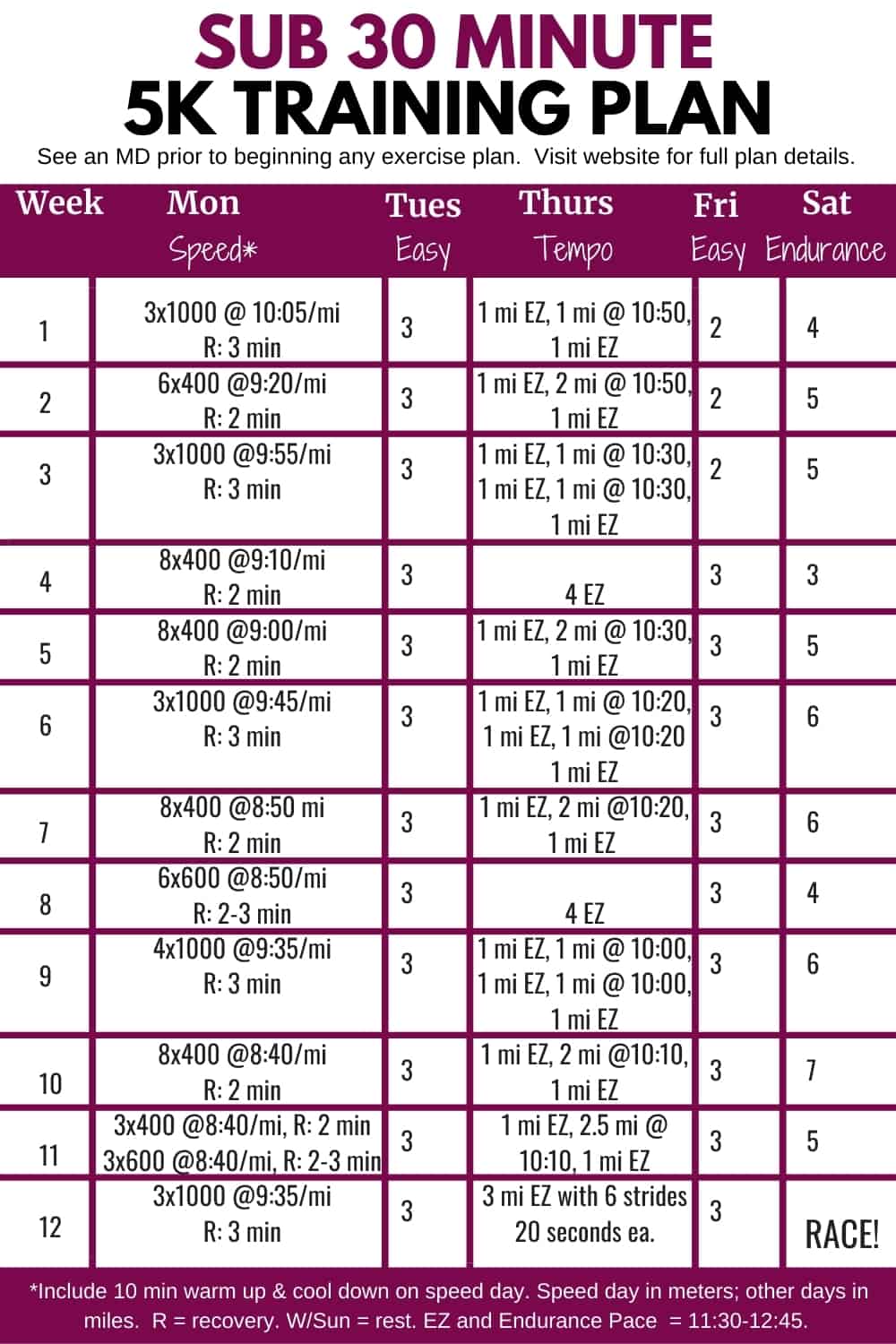Introduction: Embracing the 30-Minute 5K Challenge
Running a 5K in 30 minutes is an ambitious yet achievable goal for runners of various skill levels. This challenge offers numerous benefits, including improved cardiovascular health, increased endurance, and a sense of personal accomplishment. By following a well-structured training plan and incorporating essential elements such as strength and flexibility training, proper nutrition, and mental preparation, you can significantly enhance your running performance and edge closer to your 30-minute 5K goal.
Understanding the Basics: What is a 5K and How Long Does It Take to Run One?
A 5K is a timed running event that covers a distance of 5 kilometers, or approximately 3.1 miles. For beginners, completing a 5K may take around 30 to 40 minutes, while more experienced runners might aim for a time of 20 to 25 minutes. The 30-minute 5K mark is a challenging yet attainable goal for many runners, regardless of their starting point.
Achieving a 30-minute 5K requires setting realistic goals and following a well-structured training plan tailored to your current fitness level. By gradually increasing your running distance, incorporating interval training, and allowing for adequate recovery, you can significantly improve your running performance and work towards your 30-minute 5K target.
Assessing Your Fitness Level: Preparing for a
Creating a Personalized Training Plan: Building a Solid Foundation
A well-structured 30-minute 5K training plan is crucial for achieving your running goals. By incorporating essential elements such as interval training, long-distance runs, and recovery days, you can create a personalized plan tailored to your current fitness level and progress at a steady pace. Here are the key components to consider when designing your training plan:
- Interval training: This type of training involves alternating between high-intensity and low-intensity exercises, allowing you to improve your running pace and endurance. For example, you might run at a fast pace for 1 minute, followed by 2 minutes of walking or jogging at a slower pace. Gradually increase the high-intensity intervals as your fitness level improves.
- Long-distance runs: Incorporate longer runs into your training plan to build endurance and stamina. Aim to increase your running distance by approximately 10% each week, taking care not to overexert yourself and risk injury. This progressive approach will help you adapt to the increased distance and prepare your body for the 5K race.
- Recovery days: Rest and recovery are essential for any training plan. Schedule regular recovery days to allow your body to heal and rejuvenate. These days can include light activities such as walking, stretching, or yoga, which can help maintain your fitness level without putting too much strain on your muscles and joints.
- Consistency: Consistency is key when following a 30-minute 5K training plan. Aim to run at least three to four times per week, maintaining a regular schedule to ensure your body adapts to the increased physical demands.
- Progression: Gradually increase the intensity and duration of your workouts as your fitness level improves. This progression will help you build strength, endurance, and confidence in your running abilities.
- Cross-training: Engage in various forms of exercise, such as swimming, cycling, or strength training, to improve your overall fitness and reduce the risk of injury. Cross-training can help prevent muscle imbalances and improve your running performance.
Sample training plans for beginner, intermediate, and advanced runners are available from numerous online resources. Adapt these plans to suit your individual needs and fitness level, and remember to listen to your body and adjust your training as necessary.
Incorporating Strength and Flexibility Training: Enhancing Performance
Strength and flexibility training are essential components of any 30-minute 5K training plan, as they help improve running performance and reduce the risk of injury. By targeting key running muscles and enhancing mobility, you can optimize your running form, increase your speed, and maintain a consistent pace throughout the race.
Strength Training
Strength training focuses on building muscular power and endurance, which can significantly improve your running efficiency and speed. Incorporate the following exercises into your strength training routine, aiming for two to three sessions per week:
- Squats: A fundamental exercise for building lower body strength, squats target the quadriceps, hamstrings, and glutes. Perform three sets of 10 to 12 repetitions, increasing the weight as your strength improves.
- Lunges: Lunges help improve balance and stability while strengthening the legs. Perform three sets of 10 to 12 repetitions on each leg, focusing on maintaining proper form and alignment.
- Calf raises: Strong calf muscles contribute to improved running efficiency and reduced risk of injury. Perform three sets of 10 to 12 repetitions, focusing on the full range of motion.
- Planks: Planks engage the core muscles, which are crucial for maintaining good running posture and preventing injuries. Aim for three sets of 30- to 60-second holds, progressively increasing the duration as your strength improves.
Flexibility Training
Flexibility training, or stretching, helps maintain optimal muscle length and joint mobility, reducing the risk of injury and improving running efficiency. Incorporate the following stretches into your routine, holding each stretch for 20 to 30 seconds and repeating on both sides:
- Hamstring stretch: Standing or seated, extend one leg and reach for your toes, keeping your knees slightly bent. This stretch targets the hamstrings and lower back muscles.
- Quad stretch: Standing on one leg, bend your other knee and bring your heel towards your glutes. Grab your ankle with your hand and pull it closer to your body, stretching the front of your thigh.
- Calf stretch: Standing at a slight distance from a wall, place one foot forward and the other foot back, keeping your back leg straight. Lean forward, feeling the stretch in your calf muscles.
- Glute stretch: Sitting on the floor, cross one leg over the other and pull your knee towards your chest, feeling the stretch in your glutes and hips.
By incorporating strength and flexibility training into your 30-minute 5K training plan, you can improve your running performance, reduce the risk of injury, and enhance your overall fitness level.
Nutrition and Hydration: Fueling Your Body for Success
Proper nutrition and hydration are vital components of any successful 30-minute 5K training plan. By providing your body with the necessary energy and fluids, you can optimize your running performance, recover more efficiently, and reduce the risk of injury or fatigue. Here are some guidelines on pre- and post-run meals, as well as general recommendations for daily intake.
Pre-Run Meals
Aim to consume a balanced pre-run meal approximately 1 to 3 hours before your workout. This meal should include a mix of carbohydrates, proteins, and healthy fats to provide sustained energy and prevent hunger during your run. Some examples of pre-run meals include:
- Whole grain toast with avocado and scrambled eggs
- Greek yogurt with mixed berries and granola
- Banana and almond butter smoothie with a scoop of protein powder
- Oatmeal with nuts, seeds, and dried fruit
Post-Run Meals
Post-run meals should focus on replenishing glycogen stores, repairing muscle tissue, and promoting recovery. Aim to consume a meal within 30 to 60 minutes of your run, including a mix of carbohydrates, proteins, and antioxidants. Some examples of post-run meals include:
- Grilled chicken breast with quinoa, roasted vegetables, and a side salad
- Salmon with sweet potato, steamed broccoli, and a lemon-tahini dressing
- Tuna and avocado salad with whole grain crackers and a piece of fruit
- Quinoa and black bean bowl with sautéed spinach, salsa, and a dollop of Greek yogurt
Daily Hydration
Staying properly hydrated is essential for optimal running performance and overall health. Aim to consume at least 8 to 10 cups of water per day, and increase your intake based on your activity level, climate, and individual needs. Monitor your hydration status by checking the color of your urine; a pale yellow color indicates adequate hydration.
By following these nutrition and hydration guidelines, you can ensure your body is well-fueled and prepared for the demands of 30-minute 5K training, ultimately enhancing your performance and overall running experience.
Mental Preparation: Overcoming Obstacles and Staying Motivated
Training for a 30-minute 5K requires dedication, discipline, and mental fortitude. By focusing on goal-setting, visualization, and self-talk, you can develop a strong mental approach to overcome obstacles, maintain motivation, and ultimately achieve your running goals. Here are some strategies to help you stay on track throughout the training process:
Goal-Setting
Setting specific, measurable, achievable, relevant, and time-bound (SMART) goals can help you maintain focus and motivation during your 30-minute 5K training. Break your overall goal into smaller, incremental milestones, and track your progress regularly. This approach allows you to celebrate small victories and adjust your training plan as needed to stay on track.
Visualization
Visualization is a powerful tool for enhancing mental preparation and reinforcing positive outcomes. Regularly spend time picturing yourself successfully completing your 30-minute 5K, focusing on the sights, sounds, and emotions associated with your achievement. This mental rehearsal can help build confidence, reduce anxiety, and improve your overall mindset.
Self-Talk
Positive self-talk can help you overcome setbacks, maintain motivation, and foster resilience during your 30-minute 5K training. Replace negative thoughts with constructive, empowering statements, such as “I can do this,” “I am making progress,” or “I am stronger than I think.” By focusing on your strengths and accomplishments, you can cultivate a growth mindset and develop the mental fortitude needed to succeed.
By incorporating these mental preparation strategies into your 30-minute 5K training plan, you can develop the mental resilience and motivation needed to overcome obstacles, maintain focus, and ultimately achieve your running goals.
Race Day Strategies: Achieving Your 30-Minute 5K Goal
Race day is an exciting and nerve-wracking experience, but with the right strategies, you can confidently tackle the 30-minute 5K challenge. By focusing on proper warm-up routines, pacing techniques, and mental preparation, you can optimize your performance and enjoy the race experience.
Warm-Up Routines
A proper warm-up routine prepares your body for the demands of the race and reduces the risk of injury. Begin with 5 to 10 minutes of light cardio, such as brisk walking or jogging, followed by dynamic stretches that mimic the running motion, like leg swings, high knees, and butt kicks. These exercises increase blood flow, elevate your heart rate, and activate your muscles, ensuring you’re ready to perform at your best.
Pacing Strategies
Effective pacing is crucial for achieving your 30-minute 5K goal. Start with a comfortable pace that allows you to maintain a conversation, and gradually increase your speed throughout the race. Aim for a negative split, where you run the second half of the race faster than the first half. This strategy conserves energy, builds momentum, and helps you maintain a strong, consistent pace throughout the race.
Mental Preparation Techniques
Mental preparation is essential for staying focused, confident, and resilient during the race. Utilize visualization techniques, positive self-talk, and mindfulness practices to maintain a positive mindset and overcome any obstacles that may arise. Break the race into smaller segments, focusing on one kilometer at a time, and celebrate your progress as you reach each milestone.
By implementing these race day strategies, you can confidently approach the 30-minute 5K challenge, enjoy the experience, and celebrate your accomplishments, regardless of your final time.








